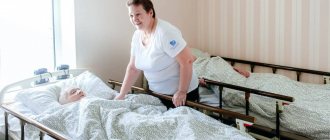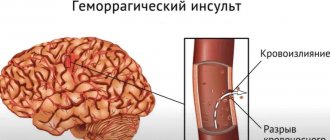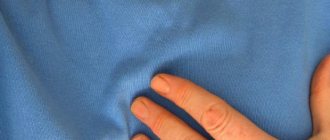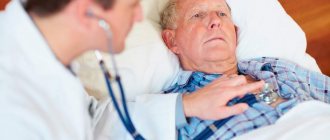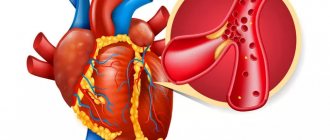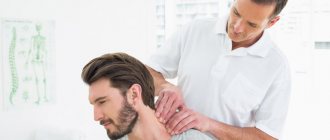If you are already familiar with the risk factors for developing cardiovascular diseases, then, of course, you know that a sedentary lifestyle and lack of sufficient physical activity leads to the accumulation of excess weight and disruption of the normal function of all organs and systems. With physical inactivity, fat and cholesterol are not completely broken down. You also know that sufficient physical activity helps fight atherosclerosis and high blood pressure. Particular attention should be paid to physical activity after a heart attack, during rehabilitation.
What are the benefits of physical activity?
- With regular physical activity, you are always in good physical shape.
- Physical activity helps increase “good” lipids in the blood, and therefore helps fight atherosclerosis.
- Physical activity reduces the blood's tendency to form blood clots.
- Physical activity helps normalize blood pressure and reduces the risk of cerebral stroke.
- Physical activity helps normalize weight and prevents the development of diabetes.
- Physical activity protects against stress and improves mood and sleep.
- Physical activity reduces the risk of osteoporosis and therefore fractures in the elderly.
As you can see, there are plenty of benefits, the list can be continued. But not all types of exercise are suitable for patients with coronary heart disease.
When atherosclerotic plaque narrows the artery supplying the heart by more than 50%, the flow of oxygen-rich blood to the heart muscle is reduced. Especially at times when the heart requires more oxygen - during physical activity and psycho-emotional stress. Oxygen starvation begins and ischemia develops. Intensive work of the heart becomes impossible, and the heart gives a distress signal, a painful attack develops - angina pectoris
.
Subtleties of nutrition
– It is clear that it is impossible to become completely healthy after a heart attack. However, it is probably not only possible, but also necessary, to mitigate its negative consequences. Tell us what needs to be done for this?
– It is necessary to reduce blood cholesterol levels. It is found in our food. The richest foods in cholesterol are fish roe, egg yolk, liver, kidneys, brains, dairy products, and animal fat.
In addition, you need to sharply limit all sweets, especially simple types of sugars, which are quickly absorbed, which contributes to a sharp rise in blood sugar levels, and this, in turn, leads to the development of carbohydrate intolerance syndrome, metabolic syndrome, diabetes mellitus, which in aggravate the course of atherosclerosis, hypertension, and heart attack to a greater extent.
Everything that gives food beauty and taste, as a rule, contains components harmful to the body of a sick person. Therefore, you need to follow a diet. The essence of the diet comes down to not overeating, not eating when you don’t really want to, for example, for company or so as not to offend the hostess.
You should especially limit your consumption of animal fats. A lot of fat, and therefore cholesterol, is contained in the skin of birds. This is why eating chicken skin is extremely undesirable for people who have had a heart attack. You should choose a skinny bird, or even better - chickens. Turkey meat is very good, it does not contain bad fat, is quite nutritious and tasty.
You need to eat at least 400 grams of fruits and vegetables. Potatoes don't count because they're pure starch. But cabbage can be eaten without restrictions, both boiled and in the form of salads. It is advisable to eat low-calorie bread made from flour that is not very finely ground. The most healthy are coarse types of bread with bran admixtures. Our people have a bad habit of ending any feast with a so-called dessert, which includes pastries, cakes, and candies. And this is after the person has eaten both meat and fat! If you really can’t bear to give up dessert altogether, replace sweets with dried fruits.
Physical activity after myocardial infarction
Angina attacks significantly limit a person's physical activity. Medication and, often, surgical treatment are required to eliminate painful attacks. But what if you have suffered the most terrible heart attack - myocardial infarction
? Many patients develop a fear of exercise; they try to “spar” the heart, sometimes even giving up walking.
Physical activity in patients with angina pectoris, including those who have had a heart attack, has a dual meaning:
- excessive activity and high-intensity loads are dangerous because they can provoke painful attacks; they should be avoided;
- moderate physical activity, which must be performed regularly (for 30-40 minutes 3-5 times a week), on the contrary, is beneficial. They can not only increase the level of “good” cholesterol (this is important for preventing the further development of atherosclerosis), but significantly improve the condition of the cardiovascular system and prevent the rapid progression of heart failure.
According to medical studies, patients who are physically active after a heart attack are 7 times less likely to suffer recurrent heart attacks and 6 times less likely to die, compared to patients who significantly reduced their exercise after a heart attack.
Patients who have had a heart attack must perform normal household activities.
(serve yourself, do light daily housework). It is very good if, after discharge from the hospital, the patient is sent for rehabilitation to a cardiological sanatorium, where he can undergo physical rehabilitation under the supervision of doctors.
No amateur performances
– That is, the sooner a person begins to load his heart after a heart attack, the better?
– Yes, that’s true, but the loads need to be increased gradually. Today, for example, you walked 1 km at a slow pace. If there is no pain or any other unpleasant sensations, the next day you can slightly increase the pace or distance.
A very serious risk factor is refusal of medications prescribed by a doctor. This is a very dangerous trend: patients often decide for themselves what to take from what the doctor has prescribed and what to refuse. But we are talking about life and death. Medicines prescribed by a doctor prevent further progression of the disease. Thus, aspirin reduces blood clotting, statins normalize cholesterol levels in the blood, and Arifon lowers blood pressure. I can give you terrifying statistics: of the total number of people suffering from hypertension, only 20% follow all doctor’s orders. Approximately 60% are treated occasionally and 20% are not treated at all. But hypertension is one of the most important risk factors for the development of atherosclerosis, and if hypertension is combined with atherosclerosis, the risk of developing a heart attack increases 5 times! In English there is such a beautiful word “compliance”, which means adherence to treatment. So, adherence to treatment among our population is very low. Under these conditions, the role of the patient’s environment increases, primarily his family members, who must monitor whether he is taking the prescribed medications correctly. – What should the blood pressure be in patients who have had a myocardial infarction?
– The so-called upper pressure should be less than 130, and the lower pressure should be less than 80 mm Hg. Art.
– This is probably a stupid question, but nevertheless, why does one person die after the first heart attack, and another survives the second, and the third, and the fourth?
– It all depends on the individual characteristics of the body and, one might say, a certain amount of luck. But there is no point in hoping that I will be lucky and be able to have a heart attack three times - the risk of not getting into the top ten is very high. The likelihood of a new incident depends on many factors: the presence of hypertension, hereditary predisposition, poor nutrition, excess weight, emotional and mental overload. In the first year, a second heart attack occurs in 10-20% of patients. Men are more vulnerable in this sense than women.
Rehabilitation at home
However, if you do not end up in a sanatorium, physical rehabilitation can and should be carried out independently. The easiest way is to walk every day. You need to choose a rhythm that is comfortable for you, slow or moderate, and go for walks at least 5 times a week for 30-60 minutes. If you feel tired or weak, sit down to rest or return home. In just a few days you will be able to walk further.
The load should not lead to the development of an attack of angina pectoris
or severe shortness of breath and palpitations, only mild shortness of breath is acceptable.
Monitor your pulse;
during exercise, your heart rate should definitely increase. At the first stage, achieve a small increase of 20-30% (for example, 15-20 beats per minute). In the future, if you have good exercise tolerance, continue to monitor your pulse and do not allow the value to exceed 200 - your age (for example, you are 56 years old: it is not advisable for your pulse to exceed 200-56 = 144).
According to the recommendations of Russia’s leading specialist in the rehabilitation of patients with heart disease, Professor D.M. Aronova, depending on the severity of angina manifestations (functional class), there are different acceptable types and volumes of physical activity.
Below are tables developed by prof. D.M. Aronov, by which you can determine the physical activity possible for you. We remind you that angina is divided into 4 functional classes, I f.k - the mildest, when angina attacks develop only during high-intensity loads, IV f.k. the most severe - an attack can develop at the slightest physical exertion and even at rest. The sign (-) indicates loads that are not permitted. (+) – activity is allowed, the number (+) reflects the volume or intensity of the load performed.
Don't pretend to be a hero
– Is it possible to have sex after a heart attack?
- Why not? Just don’t pretend to be a hero, proving your masculine worth at all costs. Patients who can easily climb to the third or fourth floor do not require any special restrictions. Those unable to handle such a load need to be careful. It is a good idea to have nitroglycerin on hand.
Special advice for summer residents. We have already talked to you about the benefits of physical activity. However, working on a personal plot cannot be classified as useful physical activity. There is even such a term as “heart attack in the garden.” This is very hard physical work, in which you often have to do things that are strictly contraindicated for patients who have had a heart attack, for example, lifting weights.
– Mostly older people work in our gardens. For many of them, the dacha garden is literally the breadwinner.
– In such cases, you need to work extremely carefully, slowly, taking breaks every 20-30 minutes. You should not set yourself impossible tasks, for example, to do so much in a day and not an inch less. Never work during the hottest part of the day. If you experience any chest pain, stop working immediately.
– Summarizing all of the above, what could you wish for our readers?
– Anyone who has had a heart attack should always have nitroglycerin or some other drug on hand to relieve pain. If pain occurs along the way, do not endanger yourself or others. Stop, relieve the pain and only then continue moving. And the main advice is to be reasonable. Do not think that health is given to you forever and without restrictions, and even free of charge, and therefore you do not need to do anything to preserve it. Health requires attention, care, and care.
Normal physical activity (acceptable load)
| Type of activity | Function class | |||
| I | II | III | IV | |
| Run | ++ | + | — | — |
| Walking: Fast (130 steps/min) Medium (100/120 steps/min) Slow (<= 80-90 steps/min) | +++ +++ +++ | ++ +++ +++ | — ++ +++ | — — — |
| Climbing stairs (floors) | 5 or more | up to 5 | 2-3 floors | — |
| Carrying heavy loads (kg) | 15-16 | 8-10 | 3 | — |
| Having sex | +++ | ++ | + | — |
Is exercise necessary after a heart attack?
Contrary to popular belief that physical activity should be minimal after a heart attack, this is not the case. Walking after
myocardial infarction can save lives. It is necessary to activate as early as possible during the recovery period to return the patient to normal life.
- Dosed loads help reduce the risk of recurrent myocardial infarction by approximately 25%.
However, the introduction of systematic physical activity should be carried out under the constant supervision of a doctor, gradually, and after a heart attack, as a rule, 3-4 months should pass. Everyone recovers at a different pace. This may be related to your activity level before the heart attack or the amount of damage to your heart muscle. At the beginning, physical therapy is indicated, walking on level ground, which should not cause discomfort or unpleasant sensations, then the loads increase from walking over rough terrain, to climbing floors and running. The load is selected individually for each patient, taking into account the history of the disease and the speed of recovery of the body after a cardiac attack.
There are special programs for dosing physical activity after a myocardial infarction, for the gradual inclusion of optimal physical activity in the patient’s life until optimal recovery. According to the classification, there are four functional classes with varying degrees of patient condition and dosage of physical activity.
- First grade. This includes patients whose body copes well with physical activity, and they do not experience discomfort when walking at a fast pace, climbing several floors, or even running moderately.
- Second class. It implies some limitation of physical activity for a patient with minor body reactions to physical activity. Distance walking, climbing over rough terrain or walking up to the 5th floor are allowed. Short and low-intensity runs are allowed.
- Third class. If the patient’s condition does not allow him to work according to the physical exercise program of the first or second class, then more gentle loads are selected for him: walking with rest and restrictions of up to 100-120 steps per minute, or at a pace of up to 80-90 steps per minute without restrictions. Climbing stairs is allowed no higher than the 2nd or 3rd floor.
- Fourth grade. If the patient still experiences vague pain or discomfort during any physical activity, then only measured, leisurely walking with frequent stops for symptoms of fatigue is recommended.
If your condition allows, and your doctor approves, then you need to return to physical activity and try to be physically active. Regular exercise is an important part of all cardiovascular rehabilitation programs after myocardial infarction and, as new research shows, it is the main way to reduce the risk of another heart attack.
- It is important to discuss this with your doctor before starting regular exercise. After a heart attack, during the recovery period, it is best to increase your activity level gradually.
- First, try just taking a short walk every day. Then you can gradually increase the distance. Six weeks after your heart attack, you should aim to walk for at least 20 to 30 minutes every day.
- As for working on a summer cottage, about which people often ask: “Is it possible? And when?". Your attending physician, based on the dynamics of observation, will be able to more accurately determine when you can visit your favorite garden. As a rule, feasible, light work in the fresh air for a short time is not harmful to health. It can bring real joy and have a beneficial effect not only on the physical condition, but also disperse despondency and improve mood, which is often depressed in many patients after a heart attack during the recovery period. However, you should not do anything that forces you to hold your breath, such as lifting heavy objects.
For most patients, in active recovery, the goal is to get at least 20 to 30 minutes of moderate exercise after 6-8 weeks and at least five days a week. Your doctor will tell you when it is the right time to start a cardiac rehabilitation exercise program. Patients who join cardiac rehabilitation programs recover faster and safer from a heart attack.
- How to start exercising after a heart attack? Basic postulates.
- If your doctor has already given you permission to exercise, it is important to start slowly and gradually increase your walking pace over 3
minutes until activity becomes moderate (slightly increased breathing, but you can still talk to someone at the same time). If you feel difficulty breathing, slow down your walking pace. - Walk at a moderate pace for 10 minutes the first time, and try to add one or two minutes each day. By the end of the month, try to walk 30 minutes at least 5 days a week.
- Be sure to cool down at the end of the exercise by gradually slowing down over the last 3 minutes of the exercise.
- If you're just starting out, do it short distances from home, and ask a relative or friend to accompany you at the beginning.
- In the future, when your body has recovered and you want more physical activity, choose an activity that you enjoy, but always follow the recommendations of your doctor.
- Check with your doctor before lifting weights.
- All exercises must be done regularly. Try to exercise daily to develop a habit and minimize any variables that may affect your exercise (meal timing, medications, work schedule, etc.).
- If you notice any symptoms such as excessive shortness of breath, chest discomfort, palpitations that do not go away, or feel very tired, stop the exercise immediately and tell your doctor.
- Accept that many things have changed since your heart attack, including your energy levels and how you take your medications regularly. Take good care of yourself, especially while you are recovering from a heart attack.
- Remember that in addition to exercise, your heart will benefit from a balanced heart-healthy diet, strict smoking cessation, weight loss and stress management skills.
Returning to exercise and your normal lifestyle after a heart attack can be difficult. But steadily building up your cardiac rehabilitation program over time will help you achieve success. And of course – fortitude and positive thoughts.
Valeologist of the prevention department M. Vereshchagina
Housework after a heart attack
| Type of activity | Function class | |||
| I | II | III | IV | |
| Sawing | + | — | — | — |
| Working with a hand drill: comfortable position, uncomfortable position | ++ ++ | + — | — — | — — |
| Working with a vacuum cleaner | ++ | + | — | — |
| Washing vertical surfaces (windows, walls, cars): comfortable position, uncomfortable position | ++ + | + — | — — | — — |
| Wiping dust | +++ | +++ | ++ | + |
| Washing dishes | +++ | +++ | ++ | + |
| Washing: comfortable position, uncomfortable position | ++ + | + — | — — | — — |
| Sewing, embroidery | +++ | ++ | + | — |
Objectives and principles of rehabilitation after a heart attack
During the recovery period, it is necessary to solve several problems:
- Remove the patient from a difficult situation and stressful state;
- Restore myocardial contractility;
- Adapt the body to new conditions;
- Increase endurance;
- Prevent the development of complications and relapses;
- Stabilize the condition;
- Improve the quality of life and increase its duration.
But to achieve success, you must strictly adhere to the following basic principles:
- Early start of rehabilitation measures - within the first two days, immediately after the acute phase is eliminated;
- Phased and gradual;
- Continuity;
- Individual approach;
- Participation of various specialists: cardiologist, rehabilitation specialist, psychologist, nutritionist, physical therapy doctor, social workers.
How to do exercises at home correctly
A month after sanatorium treatment, the patient is discharged home. However, exercise therapy does not stop there. The implementation of exercises according to an individual course is shown.
It’s difficult to get ready for physical exercise at home. Therefore, you need to accustom yourself to self-control and regularly follow the recommendations of specialists.
As a morning exercise, you can use the following exercises from a standing position:
- Feet shoulder-width apart, arms along the body. Slowly raise your arms up with resistance. You can raise one hand first, then the other.
- Turns with small and large amplitude. 5 turns in one direction and the other are enough.
- Tilts forward-backward-left-right.
- Slow leg swings.
- Leg raises with resistance. You can use a special rubber band.
Then you need to sit on a chair and repeat the same complex from a sitting position. It is allowed to engage in short-distance running, swimming, and cross-country skiing. You can play volleyball, pioneer ball.
Physiotherapeutic procedures
They are considered an important addition to physical rehabilitation methods and significantly speed up the process of restoring important vital signs. Most often it is recommended to do self-massage and breathing exercises. If the course of rehabilitation is favorable, gradual exercise with measured loads and time is allowed. These types include ordinary walking over longer distances, race walking, swimming, and cycling.
Contraindications for exercise therapy
Physical therapy, as well as some other methods of auxiliary therapy, should be carried out after a thorough examination of the patient. Classes are contraindicated in the following cases:
- temperature rise;
- fever;
- pain of any nature in the heart;
- difficulty breathing, wheezing;
- pulmonary edema;
- circulatory failure;
- deterioration of ECG parameters;
- cardiogenic shock.
If there is a disturbance in heart rhythm even when taking medications, exercise therapy is not performed. However, the patient can carry out light actions on his own: move his toes, hands, bend them at the knee, elbow. There is so-called finger gymnastics, which the sick person performs without the risk of developing complications.
Stationary stage
At this stage, it is not so much the physical recovery of the patient that is important, but the moral one. He must believe that not everything is lost, that a healthy lifestyle can be completely restored, that the disease has receded for a long time and there is no need to be afraid of relapses. But the desired result can be achieved only under one condition - the patient himself will make every effort and unconditionally follow all medical recommendations.
During the stationary stage of physical rehabilitation, the sick person must fully take care of himself and take walks of two to three kilometers. In addition, exercise therapy efforts should ensure:
- localization and elimination of complications that arise after prolonged bed rest. Consequences of outpatient treatment may include intestinal disturbances (atony), thromboembolism, and congestive pneumonia. Restoring movement makes it possible to restart the vital functions of the body;
- the maximum possible restoration of the performance of the cardiovascular system at the initial stage, training of peripheral circulation. In this case, the load on the heart is selected as sparingly as possible, the patient is constantly monitored;
- orthostatic stability, restoration of simple motor functions.
As soon as the patient is convinced of the progress of the results of the fight against the disease, he will have positive emotions and confidence in his future. Normalization of mental state also plays a very important role in the process of returning to a normal lifestyle.
Is it possible to return to normal life after a heart attack?
The duration and quality of rehabilitation depends on the influence of many factors, primarily the severity of the heart attack.
Concomitant pathologies and complications, age and occupation, etc. play a role. During rehabilitation (and not only) a diet should be followed, the risks of stressful situations should be minimized, a healthy lifestyle should be maintained, preventative medications and medical supervision should be performed. The list and nature of measures is selected for each patient and should be applied in combination.
